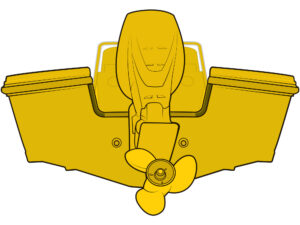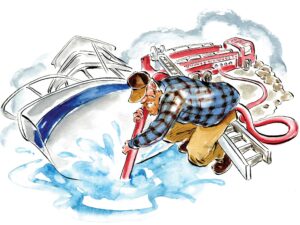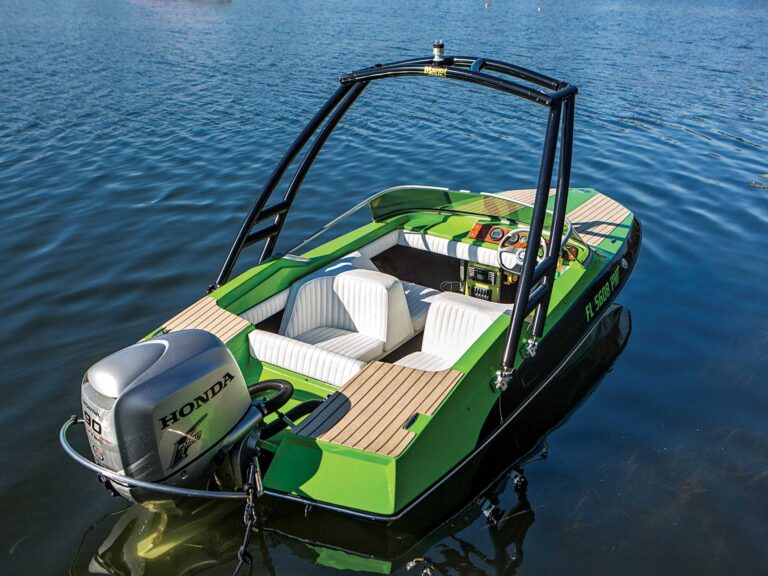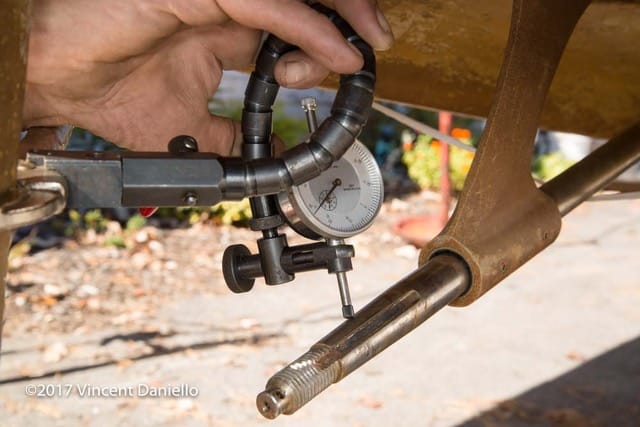
You know you never hit bottom, but suddenly hatch hinges clatter while underway, and a tingle starts in your feet and travels all the way through your spine. Jeff Fay, owner of Fay’s Boat Yard on New Hampshire’s Lake Winnipesaukee explains how to track down inboard engine vibrations so they don’t rattle your soul.
First, don’t overlook the prop. A floating four-by-four can knock a blade out of pitch without visible signs. Check the shaft too. “If the tip of a propeller blade is bent over, there is a good chance the shaft is bent,” Fay says. Place a dial indicator at the taper and rotate the shaft, looking for no more than two-thousandths of wobble. Check long shafts in the middle too for no more than five-thousandths variance.
TIP: When checking the alignment of the shaft couplings it’s best that the boat be floating in the water. A shaft aligned when the boat is on the trailer may no longer be aligned when the boat is floating in the water
Struts don’t become misaligned without a hard grounding, but cutlass bearings can wear out if a wad of fishing line or a lobster trap’s warp works between the shaft and the rubber bearing. Push the shaft around — any wiggle inside the bearing might cause vibration.
Next, look inside the boat. “If something is broken, it’s usually pretty obvious,” Fay explains. Compare port to starboard engine mounts, which sometimes break or crack, and so do metal brackets that attach engines to mounts. Also look for a rotting or damaged stringer.
If all seems OK, grab a helper and head out for a second look. “Sometimes the wood inside the stringer rots. The motor seems like it’s sitting alright, but when you put it under load, the mounts start moving around,” Fay says. If lag bolts holding a mount to the stringer won’t tighten and just spin when you put a wrench to them, consult an expert for solutions.
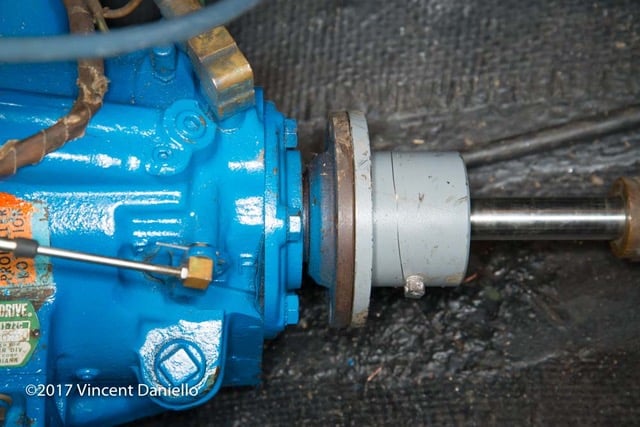
Internal mount problems often aren’t obvious. “Motor mounts have rubber inserts that can go bad,” Fay states. “Unbolt the shaft coupling and look at it.” A damaged mount usually lowers its corner of the engine. If, say, the two coupling faces are open at the top starboard-side (2 o’clock looking at the coupling from the stern) and pinched tight at the bottom port side (8 o’clock), suspect a problem with the port forward mount.
Motor mounts adjust too. A coarse adjustment left to right ensures the engine and shaft are parallel port to starboard and the shaft is centered to the engine.
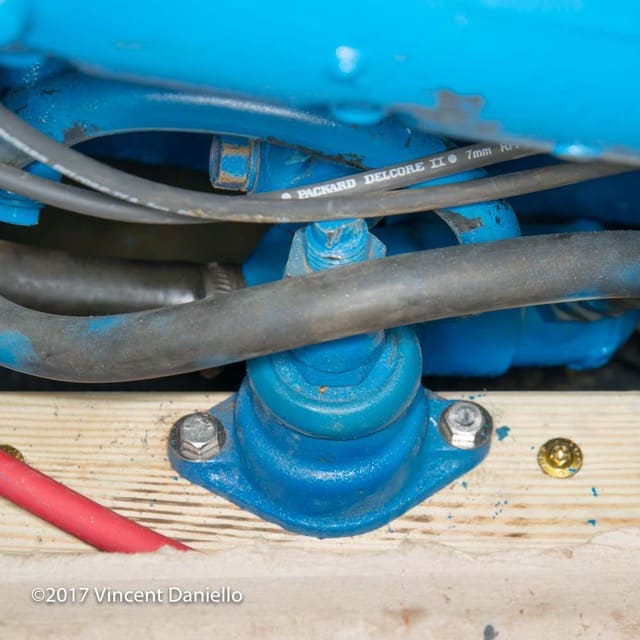
Mounts also adjust for height. Often, a threaded stud fits through the engine bracket, which sits atop a large nut. Rotating that nut lifts or lowers the engine on the mount.
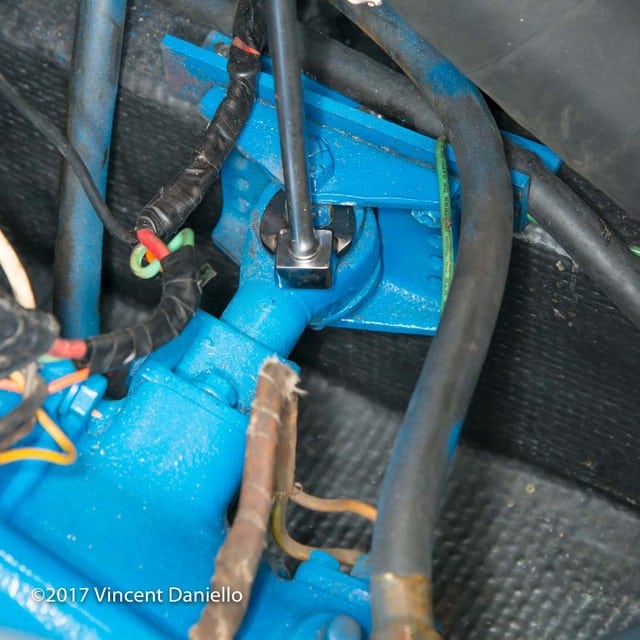
A nut atop the engine bracket, and sometimes a jam nut or locking tab beneath the bracket, ensures everything stays in place once alignment is set.
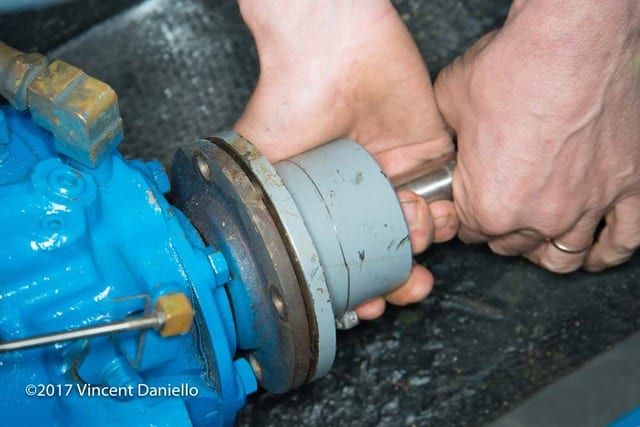
Alignment Steps: Lift the coupling into its proper position and check that the two faces of the coupling are roughly aligned left to right.
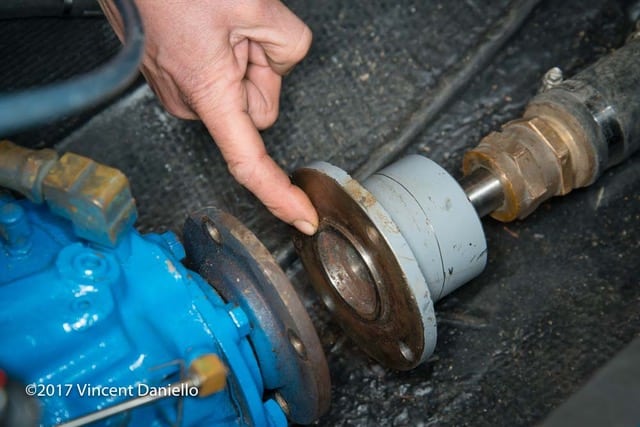
Next, slip the raised ridge on one coupling face into its mating groove on the other face.
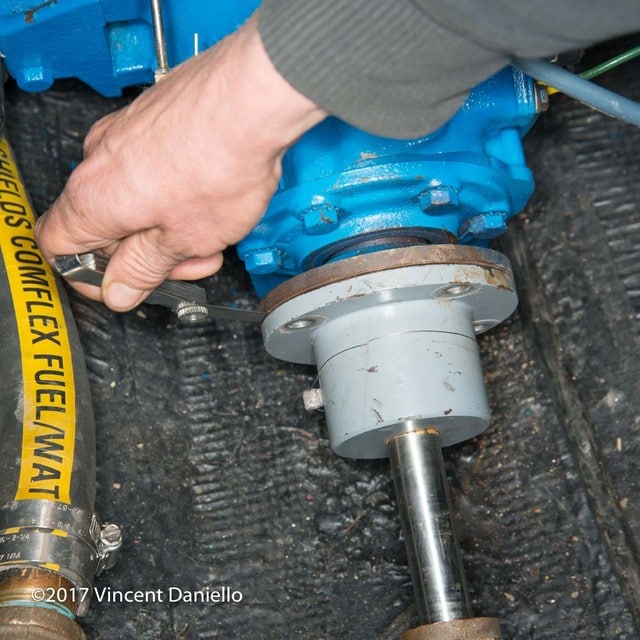
Push a feeler gauge between the coupling faces — if the gap is tight at 3 o’clock and looser at 9 o’clock, or vice versa, the engine and shaft aren’t parallel in the boat.
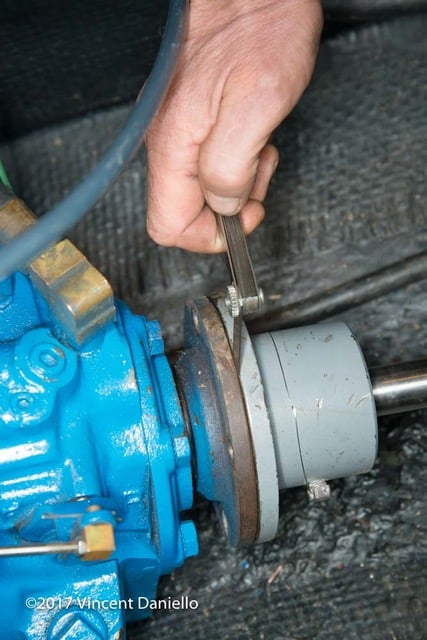
Check the gap between coupling faces at the top and bottom too, and either raise or lower the front or rear mounts until the two faces are exactly parallel.
When all seems aligned, rotate the coupling and check around its circumference one last time before bolting it tight.
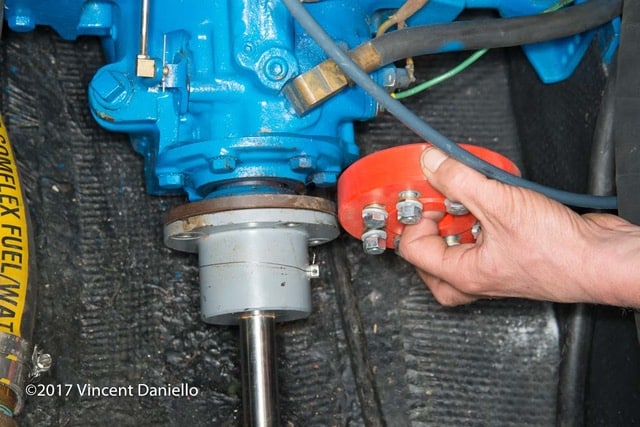
Added Flexibility: As a last resort, Fay says, a vibration-absorbing coupling insert might smooth out an otherwise rattle-prone drivetrain. Just be sure the propeller still clears the rudder once it’s pushed aft by the insert’s thickness.

